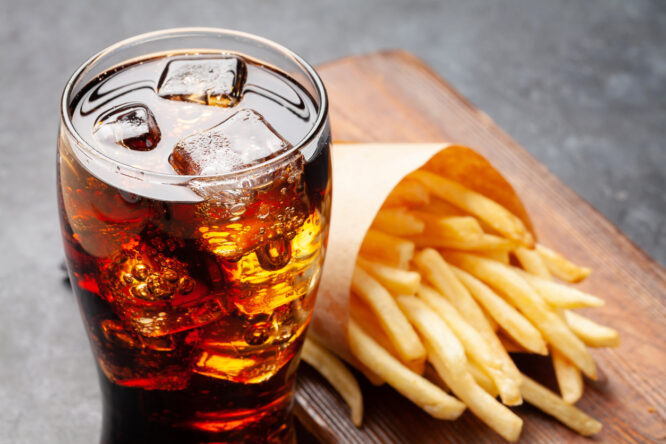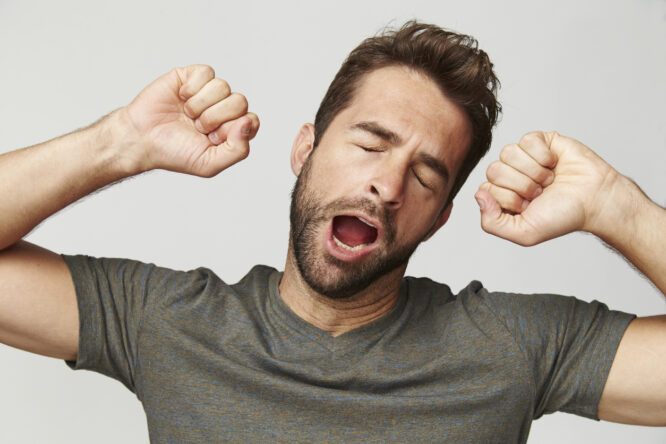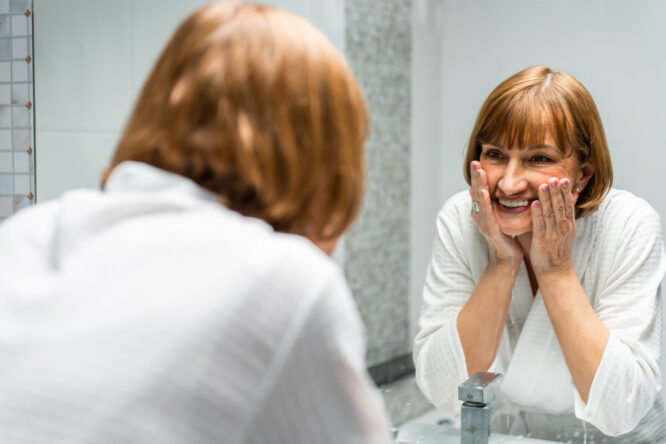
If you’ve been on TikTok lately, you might’ve seen people swearing by a “McMigraine Meal”—a combination of full-fat cola and salty fries—as a quick fix for migraines. The idea is catching on, but health professionals aren’t exactly jumping on the bandwagon. Before you reach for the drive-thru during your next migraine attack, here’s what you need to know about the trend and the reality behind it.
Yes, people really are trying this.
Plenty of users online have claimed that cola and fries help ease their migraine symptoms. The theory? Caffeine and sugar from the cola give your system a quick jolt, while the salt from fries might help with hydration and electrolyte balance. One sufferer even said it helps “take the edge off” while waiting for medication to kick in.
It’s not all that surprising this is gaining traction—migraines can be debilitating, and when you’re in pain, you’ll try anything. But just because it works for one person doesn’t mean it’s a go-to solution for everyone. That’s where the danger in these viral hacks creeps in, and what feels like a harmless snack can easily get overhyped as a “cure.”
Caffeine does have a role in migraine treatment.
There is a kernel of truth behind the cola part. Caffeine is actually included in some migraine medications because it can restrict blood vessels and help certain drugs absorb more quickly. So, for some people, a small amount of caffeine might ease symptoms if caught early enough.
But there’s a fine line. If you have too much caffeine, or rely on it regularly, it can actually trigger more headaches. Doctors often warn patients about “rebound migraines” caused by inconsistent caffeine use. So while a bit might help, treating cola like a magic solution is risky.
Salt cravings might signal something, but not a fix.
Some migraine sufferers report craving salty food before or during an attack, which is one reason fries have entered the chat. The thinking is that salt helps your body retain fluids, and dehydration is a known migraine trigger. So it’s not totally irrational to reach for chips.
Still, the salt itself isn’t a treatment—it’s more of a symptom of what your body might be lacking. If your migraines are triggered by hydration issues, there are more effective (and less greasy) ways to deal with that than downing a tray of fast food.
@user3365325534172 McDonald’s Migraine hack explained by a Neurologist. 🧠🍟🥤 #migraine #migraines #migrainerelief #migrainetiktok #headache #headacherelief #neurology
Processed food can also trigger migraines.
This is where things start to get murky. While some people say fries help, others report that processed or fried foods make things worse. That’s because many processed items contain a compound called tyramine, which has been linked to migraine attacks in some people.
So depending on how your body reacts, that McDonald’s fix might do the opposite of what you’re hoping. Migraine triggers are wildly personal, and just because fries help one person doesn’t mean they’re harmless for everyone else.
It’s not a medically recommended strategy.
Doctors aren’t condemning people who’ve tried this, but they’re not endorsing it either. Most migraine specialists agree that while certain foods and drinks might soothe symptoms temporarily, this trend oversimplifies a condition that’s incredibly complex.
There’s a risk that people will start replacing proven medical treatments with viral food hacks. Experts like Dr. Kay Kennis stress that while cola and fries might not be harmful in small doses, they shouldn’t be your first line of defence when a migraine hits.
There’s no such thing as a universal fix.
Migraines don’t follow a rulebook. One person might be able to function through theirs, while another ends up in a dark room for days. Triggers vary widely too—light, stress, hormones, smells, food, you name it. That’s why this idea of a universal cure through fast food doesn’t really stack up.
Even if you found it helpful once, that doesn’t mean it’ll be effective every time. Migraines evolve, and what works for your body can shift depending on sleep, stress, or hormone levels. It’s always better to have a range of strategies in your toolkit, not just fries and a drink.
Migraine meds are improving—fast.
While TikTok is focused on junk food, medical research has been developing new treatments that offer more targeted relief. Drugs known as gepants are a newer class that aim to block pain receptors involved in migraine attacks before they gain momentum.
They’re taken as the first sign of symptoms and could help people who haven’t had much success with older treatments. These advances mean that real, science-backed progress is being made, just not in the form of a snack combo from the high street.
Social media can make things worse, not better.
Social media has given migraine sufferers more visibility and connection, but it also opens the door to unverified health advice. It’s easy to fall into the trap of trying what the algorithm shows you, especially when you’re desperate to feel better fast.
The problem is, these “hacks” are often based on anecdotal stories that haven’t been medically evaluated. The risk isn’t just that they might not work—it’s that they could delay someone from getting the right care or trying a treatment that actually helps in the long run.
Real relief usually involves trial and error.
For people who’ve suffered from migraines for years, like Eloise Underwood or Kayleigh Webster, relief usually comes from a combination of things: medication, lifestyle tweaks, staying ahead of triggers, and sometimes even Botox. It’s rarely a one-shot solution.
This trial-and-error approach can be frustrating, but it’s also necessary. Keeping a migraine diary, noticing early signs, and working with a GP or specialist gives you a better shot at real, consistent relief than any trend ever will.
It’s okay to experiment—just do it wisely.
At the end of the day, no one’s saying you can’t try cola and fries if it helps you. If it gives you some comfort while waiting for meds to kick in, fair enough. But don’t throw out your treatment plan because of a few likes and comments on TikTok.
Migraines are tough. They can ruin days, derail plans, and wear you down over time. So if something helps, it’s understandable to cling to it. Just make sure the help you’re leaning on is actually helping, not just feeding into false hope with a side of salt.




